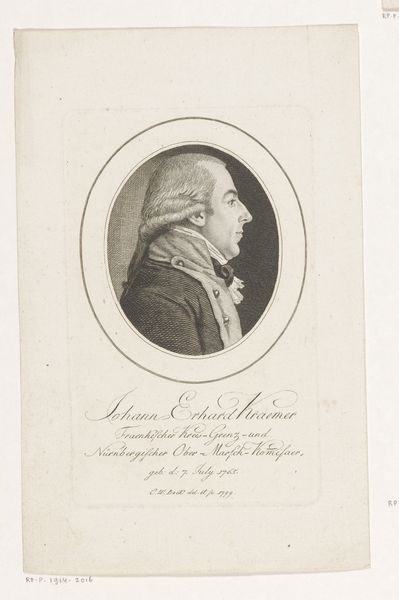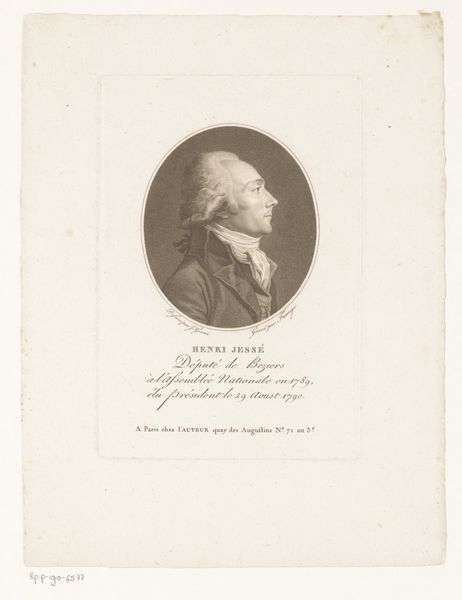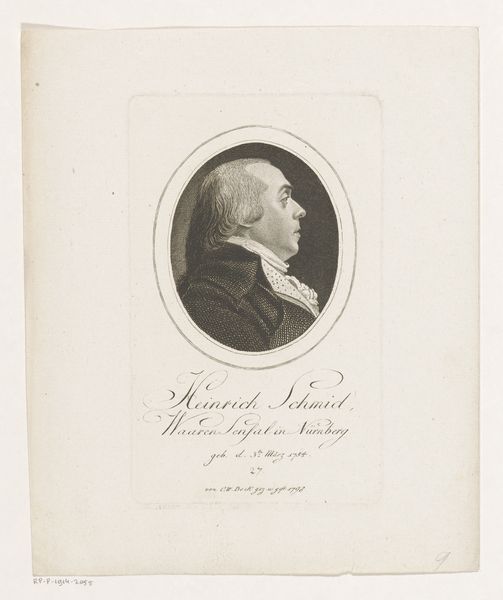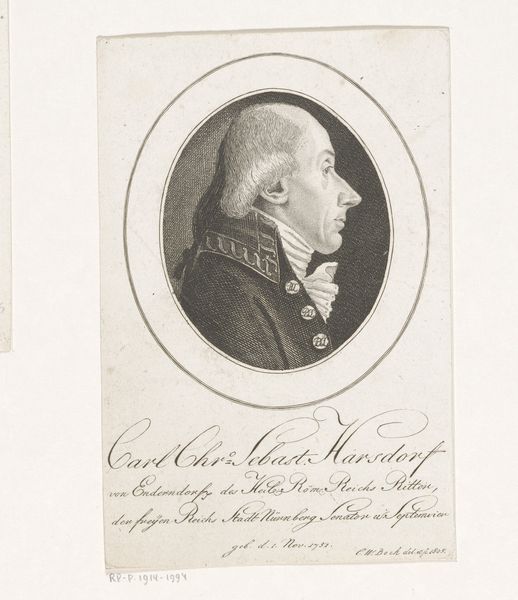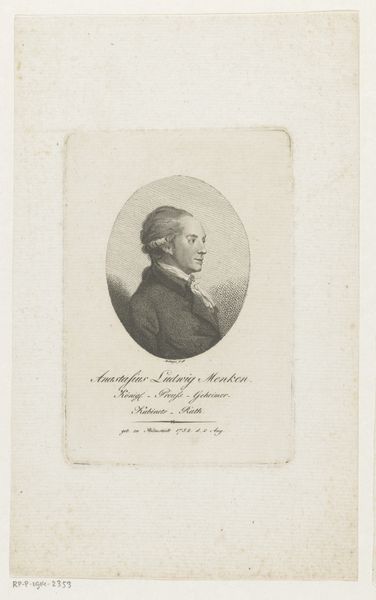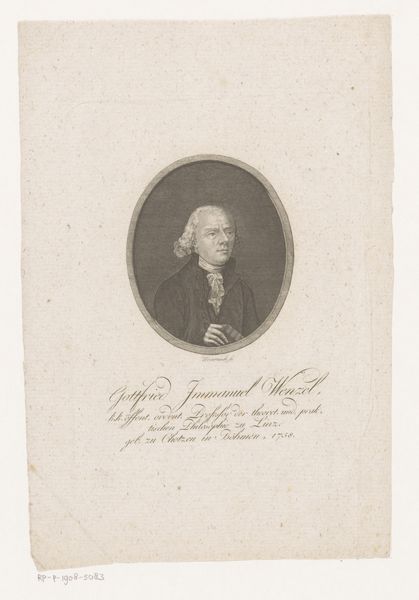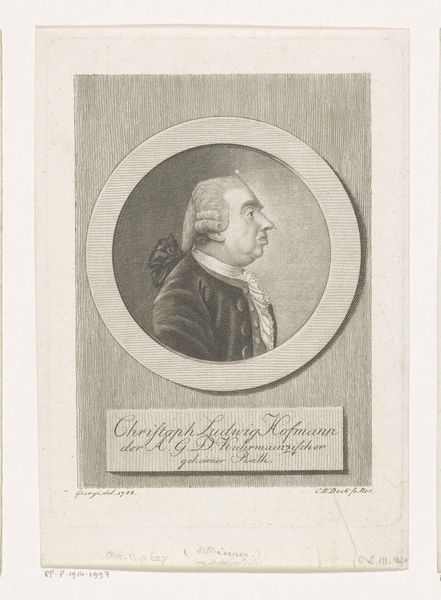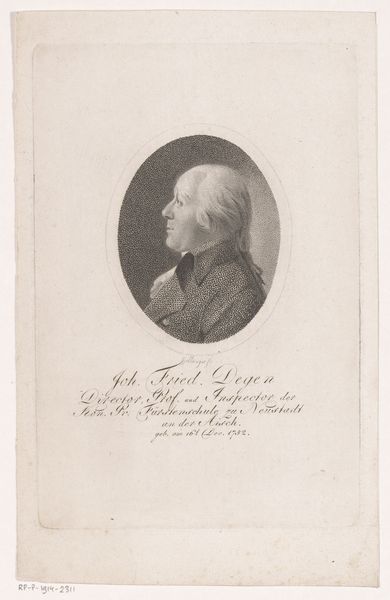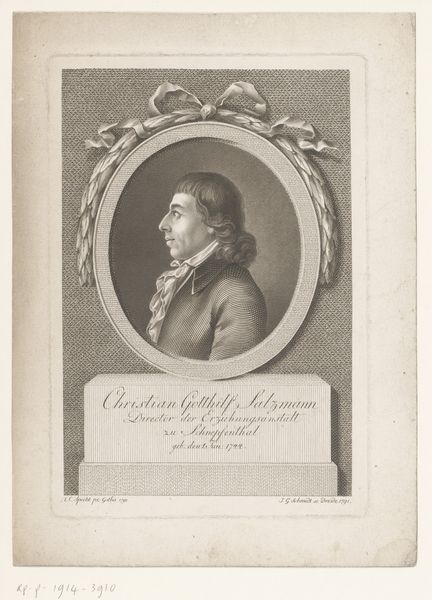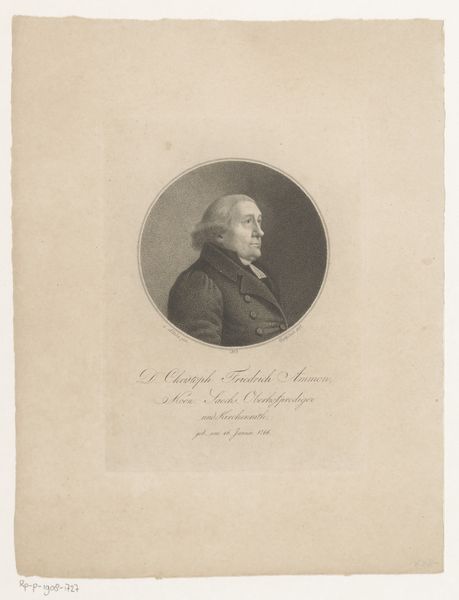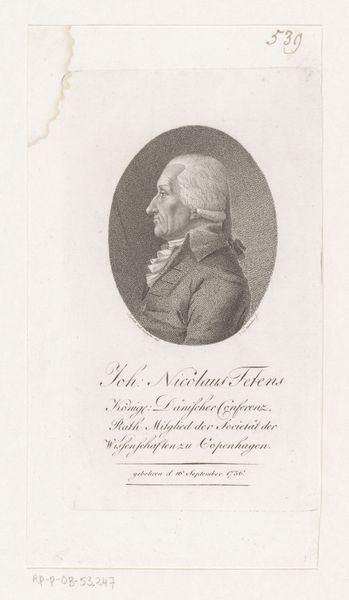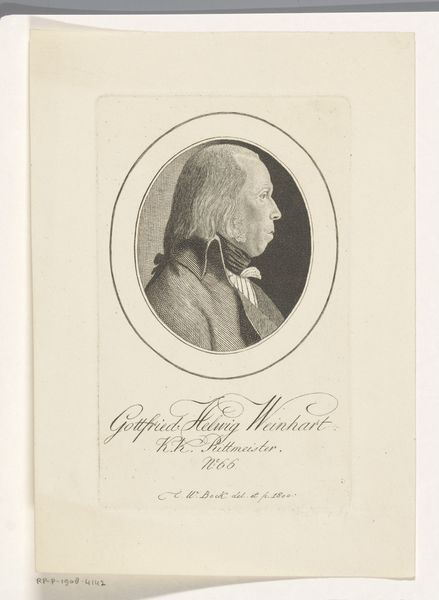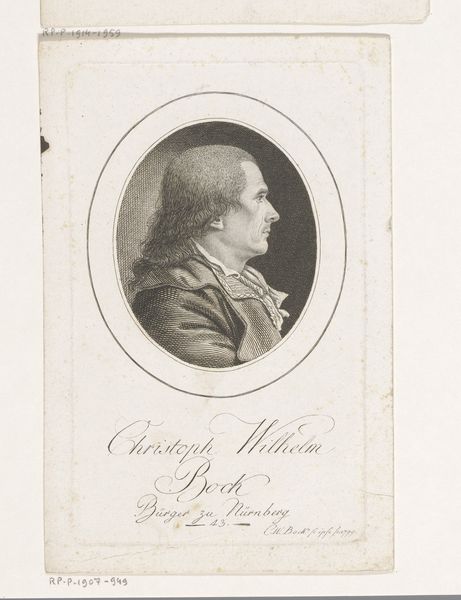
print, engraving
#
portrait
#
neoclacissism
# print
#
old engraving style
#
line
#
academic-art
#
engraving
#
realism
Dimensions: height 152 mm, width 93 mm
Copyright: Rijks Museum: Open Domain
Editor: This is "Portrait of Christoph Jacob Keller," an engraving made in 1802 by Christoph-Wilhelm Bock. It's very linear, a bit formal, like a stamp or an illustration in an old book. What stands out to you when you look at this print? Curator: What catches my eye first is that delicate tension between precision and... almost yearning? The engraving technique, so meticulous and clean, gives a real sense of order and clarity, but look closely at Keller's expression, the set of his jaw, the way his hair seems to resist being perfectly coiffed. Do you sense that quiet rebellion against the strictures of Neoclassical portraiture? It’s there, a flicker beneath the surface. Editor: I see what you mean. There's definitely a contrast between the medium and the subject’s character. It feels less…idealized. Curator: Exactly! Bock, the artist, is walking a tightrope, isn't he? He’s using the visual language of the era - clean lines, profile view – but he's also hinting at the inner life of his sitter. Do you notice how the circle surrounding his face frames him, almost like a window into a soul not entirely at peace? Editor: Yes, it's like a little glimpse into 18th century Nuremberg. And interesting how this almost clinical medium lets us imagine the subject’s thoughts. Curator: And isn't that the magic of art, really? Taking the tools and conventions available, and bending them just enough to let a little bit of human truth shine through? Even in an engraving designed to commemorate, there's space for a whisper of something more. Editor: That’s so interesting. I thought it was just a formal portrait, but now I see the artist playing with the genre. Thanks for showing me those subtle details.
Comments
No comments
Be the first to comment and join the conversation on the ultimate creative platform.
